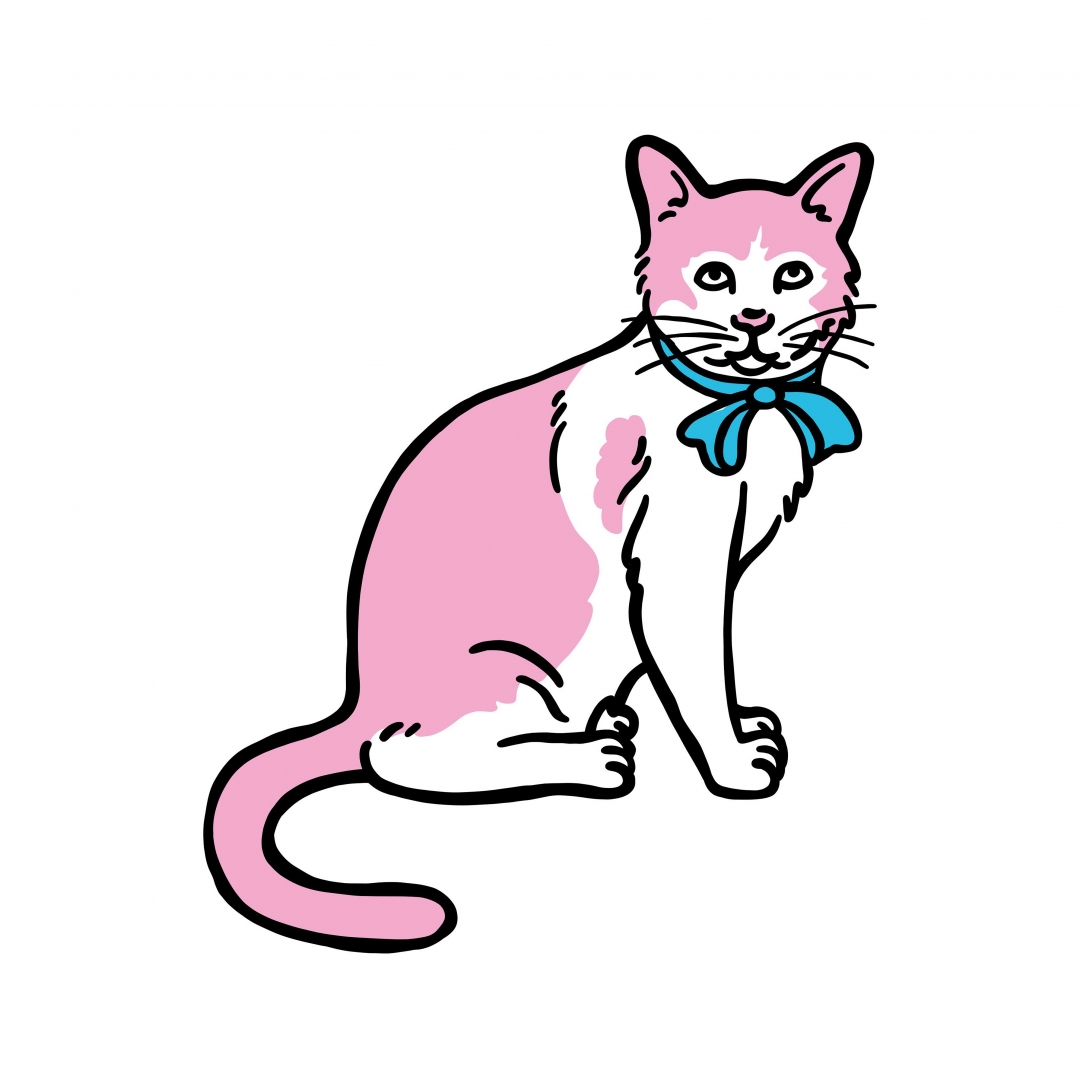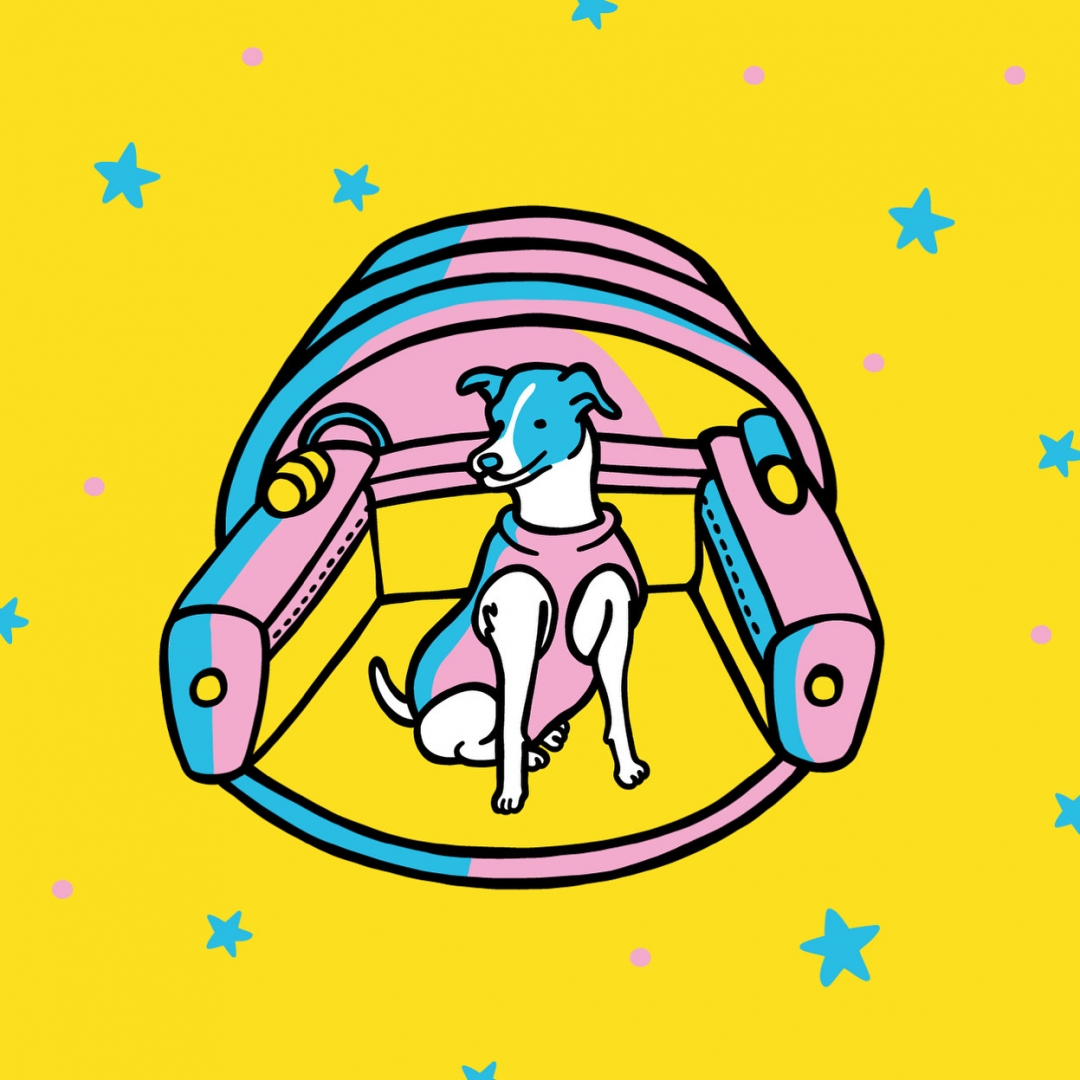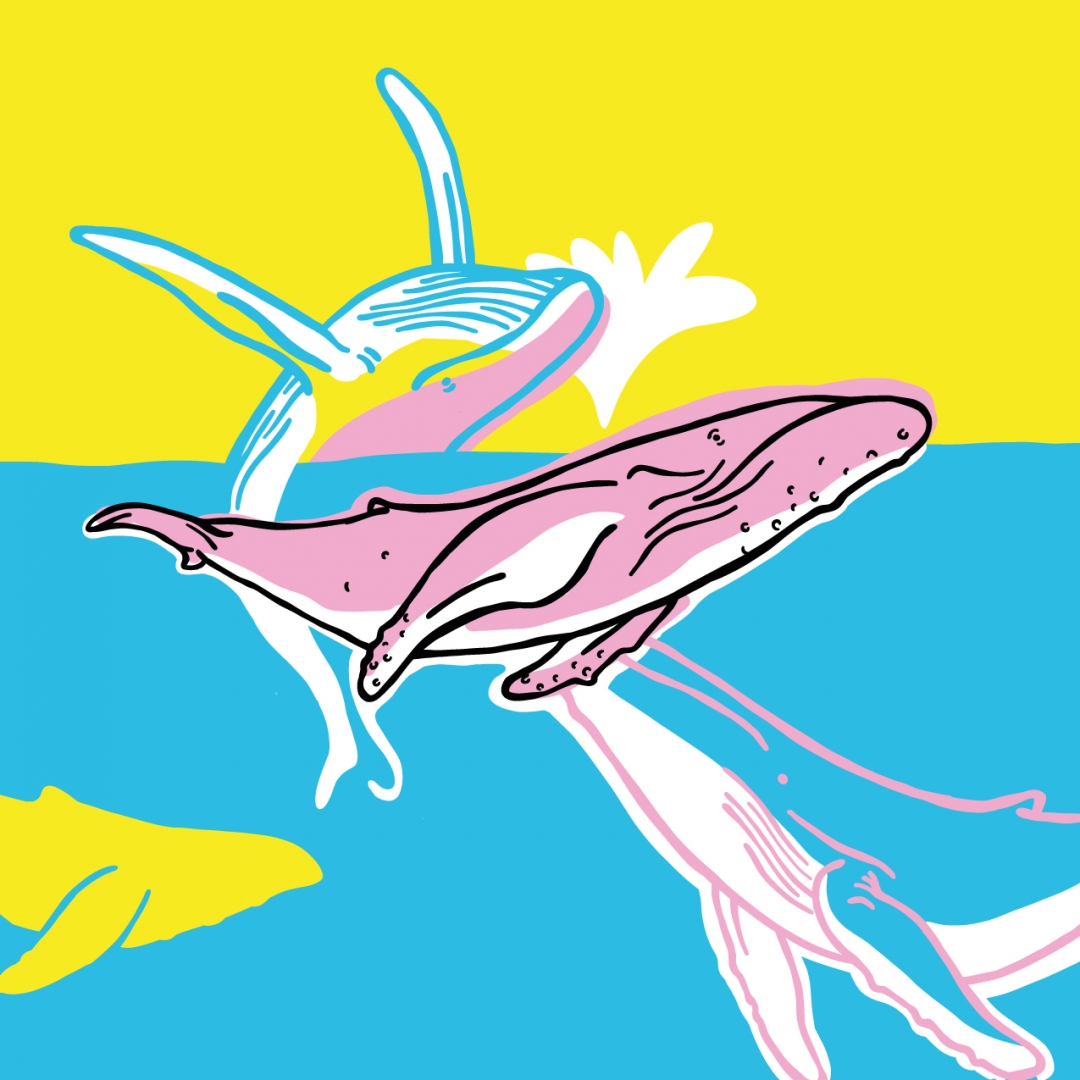Sanz i Vila
The Colours of Empathy

His illustrations have been featured in international television series, festival posters, beverage and furniture campaigns, and book covers. The iconography of the Alicante-born Sanz i Vila is part of a new graphic imaginary that creates a personal style to talk about issues that matter.
Pau Sanz i Vila (Dénia, Alicante, 1990) broke into the illustration landscape in 2013. His style became immediately recognizable: black-edged, pastel-coloured drawings give life to a seemingly innocent style that spreads informational and didactic messages. The 2016 book Los novios de Gael (Gael’s Boyfriends) was devoted to polyamory. In Perros, gatos y otras superestars (Dogs, cats and other superstars), published by Ediciones Hidroavión, the theme is the contribution of animals to human culture and history.
How did you come up with a book about dogs and cats?
My three previous books were more subjective, they contained autobiographical elements and were written in the first person. This time I wanted to tackle a more encyclopaedic project. I’ve liked animals since I was little, and I wanted to find an interesting approach for everyone: the goal was to talk about things that I like that fitted in my pop style.
Is it true that you were meant to be a teacher and that you are now a professional illustrator by chance?
That’s correct. I’ve been making illustrations since 2013, but I’ve never stopped training as a teacher. Although my work is aimed at people of all ages, it’s focused on a more youthful demographic. A grown-up would probably think my work is a bit naïve, but a younger person would understand that it uses a kind tone. When I’m being didactic, I try not to be dogmatic and show things –as I did, for example, with polyamory in Los novios de Gael— in a way that I haven’t seen reflected as something common neither in cinema nor in literature.

A drawing from Perros, gatos y otras superstars. © Courtesy of Pau Sanz i Vila
One of your international projects was to decorate some bathrooms for the TV series Sex Education.
The series provides a lot of information I wish I’d had access to during my doubt-ridden teenage years. I hadn’t watched it, but I was filled in with the show’s essence and intention and I made a series of illustrations. They gave me a lot of freedom to approach the project, and that's why I talked about transsexuality, polyamory and other issues that would have generated many doubts in me at the age of the series' characters.
You have also done a lot of work for brands and events, both national and international; sometimes your work has a protest element to it. Is this why you’re sought after?
Yes, there are brands that come to me because they know that I’m interested in the LGTBI community or in the environment and that I broach these subjects in my illustrations. Beyond the medium I collaborate with I always look for my work to be informative about a certain reality. I’m given a lot of freedom because they know I’m going to express my personal opinion and that what I support is what they support.
You use three basic colours: blue, yellow and pink. What is the reason for this choice?
That’s partly because I don't like changes at all. I’ve been using more colours lately, but those are still predominant in my work. I’ve been asked about this from the very beginning. The truth is that it’s a choice that has ended up becoming closely linked to the way I express myself. There’re people who recognize my work by seeing the colours. And although I say I don’t like changes, from time to time I do force myself to change, though technique isn’t something I’ve ever tried to surprise with.
You mentioned Los novios de Gael, which is still your most popular book. Why do you think that is?
I think it’s because there are no books that talk about polyamory so intimately and realistically; after all, it’s just another way of being in a relationship. It’s true that an illustration on a delicate subject with my style and colours makes things easier to understand. And I think that has a lot to do with how the book has been received. But, above all, I attribute its success on the fact that I tackled that subject at the right time and in the right way. The title was also a success because it aroused curiosity. I still receive many thankyou messages and emails because of it. Knowing that it’s helping normalize something that is there is very gratifying.

Laika, a heroine she-dog. © Courtesy of Pau Sanz i Vila
You are from Alicante. Does the Mediterranean influence your work?
I’ve lived in Madrid and it has been hard to live far from the sea. But, more than the sea, I believe the influence comes from the aesthetic born around tourism in the area, which is still a little kitsch and characterized by a specific kind of tourism embodied in the souvenir. That’s what has really influenced me.
In fact, a couple of years ago you designed a Benidorm T-shirt…
Yes, and I wasn't commissioned to do it, I made it because I love the city. I feel very close to it since my childhood and youth. My feeling of admiration and affection is real, there’s no irony. Benidorm is flourishing today. What in the past made people look at it condescendingly has now become part of a positive identity. Young people like Benidorm very much; there’s also the Low festival. I think my T-shirt connected very well with that idea millennials and the new generations have about the city.
You’ve also made Sant Joan bonfire. Do tell us.
I was proposed to collaborate, but I wasn’t me who made it. I love bonfires and Fallas. I drew the sketches, but it was built by a workshop. It wasn’t my hand that created it, although I visited sometimes to paint and supervise.
What things inspire you?
It goes in phases. There was a time in which it was themes about love, though it still inspires me. I’m very inspired by popular culture, by films and TV series. I’m usually interested in topics and figures that aren’t quite connected to conventional pop. I’m inspired by everyday life, by the scenes I witness while walking on the street, for example my cat doing something funny. And maybe that’s what makes the difference between what an author like me should do and what I finally do.
“I’m inspired by everyday life, by the scenes I witness while walking on the street, for example my cat doing something funny.”
That’s what happens in Perros, gatos y otras superstars, the animals featured aren’t media starts in most cases, but animals that made history anonymously.
The case of Laika is well known because it was a dog astronaut, but there was also an astronaut cat, Felicette, which didn’t get the same attention. It hasn’t become iconic despite the fact that it also traveled to space, shortly after Laika. There are many anonymous stories in the world of popular animal icons.
What is talent for you?
Knowing what you have to do, how you have to do it and, above all, understanding very well who’s your audience. One has to have interpersonal intelligence and know that what you’re doing, whatever the field, in art or in business, isn’t never just for yourself. In my case, talent lies in knowing how to reflect what I want to reflect and in connecting with people with the same interests and experiences.

The use of pink, blue and yellow is one of the artist’s hallmarks. © Courtesy of Pau Sanz i Vila



